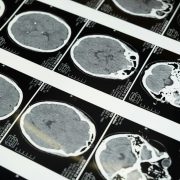It’s a relatable frustration to have a habit, or few, that we would like to change. Perhaps in times of stress, you find yourself overworking, eating, or isolating from others to try and cope with difficult emotions or regain a sense of control.
Certain habits may bring immediate relief, which can make them hard to change. For example, eating a box of cookies after a stressful day at work may be soothing in the moment. While we’re eating the cookies, we may feel temporarily relieved of our worries and stress. But over time, as behaviors become habits, there is potential for us to feel worse rather than better.
We may have tried any number of strategies to change unwanted habits throughout our lives, such as:
Searching for the “solution”
Rationalizing the behavior
Avoiding or denying the issue
Worrying or ruminating
Criticizing or judging ourselves
If you’ve tried to change a habit using these types of strategies, you may have found that they have potential to work temporarily but they can be unlikely to support long-lasting change. For example, after overeating in response to stress, we could worry about overeating in the future. Worrying may help us feel more in control in that moment (perhaps because we feel like we are doing something to protect against future overeating), but worrying now does not empower us to make different choices in the future, in real time.
Let’s consider an alternative (Mindful) way we could aim to modify habits
Observe
Something kicks a habit into motion. If we were to pause and observe what is happening within us before a habitual behavior occurs, we could notice:
Thoughts
Emotions
Sensations
Circumstances
Habits can occur in response to any combination of these events. It could be a self-critical thought or boredom that makes us reach for the box of cookies. If we want to change a habit, it can be a useful first step to increase our awareness about what may be setting the habit in motion. Once we see what is happening in real time, we may have more power to make a change.
Pivot
A habitual behavior is likely pulling us away from qualities that are important to us, which may be part of why we want to change the behavior. For example, eating a box of cookies to cope with stress may be pulling us away from vitality and energy. Consider a pivot. If we were moving toward qualities that are important to us – what would that behavior look like? For example, rather than eating a box of cookies, we could move in the direction of qualities that matter to us:
Go on a walk (health)
Phone a friend (relationships)
Read a book (leisure)
Make a cup of tea (self-compassion)
Why?
Choosing to move toward qualities that matter to us can be supported by exploring our “why.” Why does this habit change matter? For example, vitality and energy may be important qualities because we want to be well to raise children or be independent as we age. Identifying and aligning ourselves with the bigger purpose can help us make choices in the now that support our vision.
In times when we make the choice that supports our best selves, we can direct our attention to those inner feelings of goodness.
Let them soak in.
Support
If we changed from a place of self-love and kindness, what would be possible? The possibilities can be vast and exciting! Change can be challenging, present many opportunities for growth, and help us build resilience. You also do not have to build lasting change alone. If you would like to learn more, reach out for a free 15-minute informational phone consultation.
Request A Consultation
Disclaimer: Please note that visiting this website does not constitute a doctor-client therapeutic relationship. The information and resources included or linked on this website are for informational purposes only and are not intended to assess, diagnose, or treat any medical and/or mental health disease or condition. The information obtained from this site should not be considered a substitute for a thorough medical and/or mental health evaluation by an appropriately credentialed and licensed professional. We do not know the specifics of your situation or have the facts to provide this type of evaluation and recommend that you seek an appropriately credentialed and licensed professional to establish a doctor-client therapeutic relationship. This website also includes links to other websites for informational and reference purposes only. This website does not endorse, warrant or guarantee the products, services or information described or offered at these other websites.




